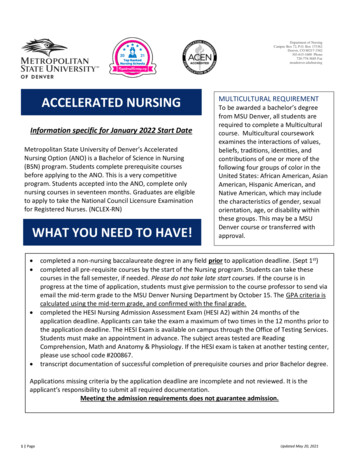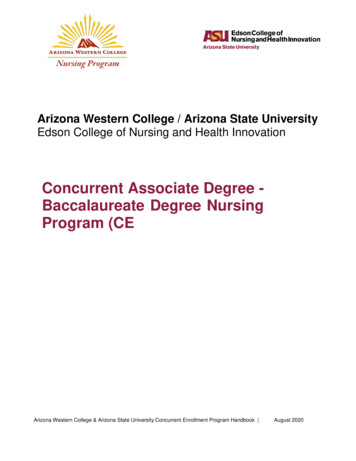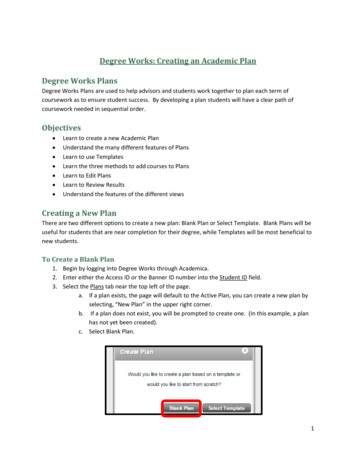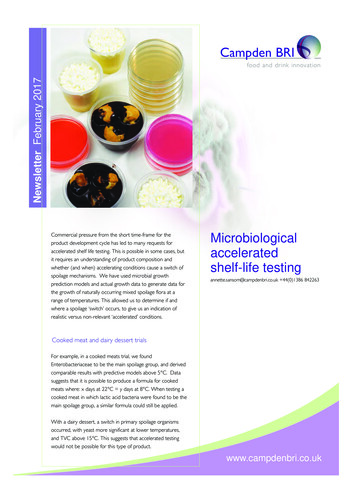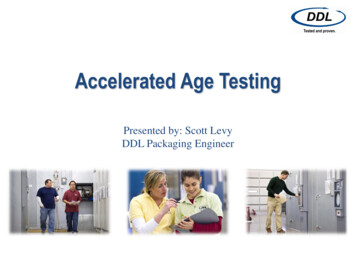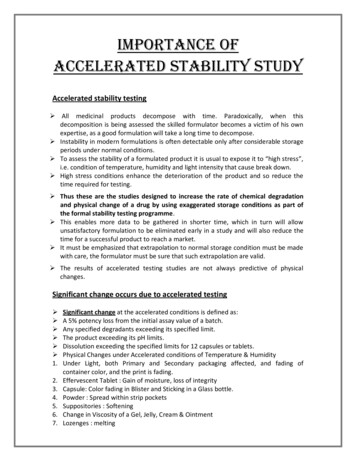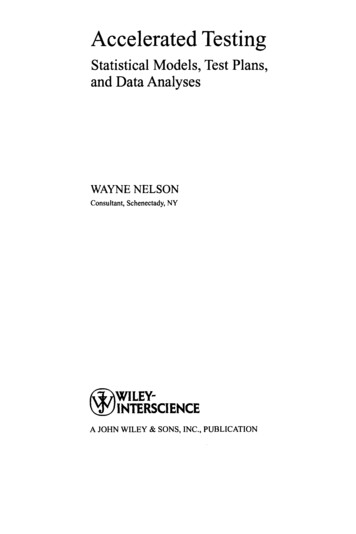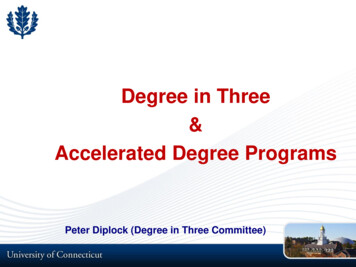
Transcription
Degree in Three&Accelerated Degree ProgramsPeter Diplock (Degree in Three Committee)
Degree in Three & Accelerated ProgramsCommittee MembersBrian Boecherer, Executive Director, ECEDan Burkey, Associate Dean for Undergraduate Education and Diversity, School of EngineeringJoe Crivello, Professor Physiology and Neurobiology, CLASRobert Day, Associate Dean for Undergraduate Programs, School of BusinessPeter Diplock, Assistant Vice Provost, CETL (Chair)Karl Guillard, Professor Plant Science and Landscape Architecture, CAHNRKatrina Higgins, Director University AdvisingErin Mason, Associate RegistrarAndy Moiseff, Associate Dean Behavioral and Life Sciences and UGRD Programs, CLASMansour Ndiaye, Executive Director CLAS Academic Advising CenterDan Pejril, Assistant Professor in Residence, Digital Media and Design, School of Fine ArtsMarianne Snyder, Assistant Professor & Director of the Prelicensure Program, School of NursingAngela Starkweather, Professor and Associate Dean, School of Nursing
Degree in Three & Accelerated ProgramsResearch Findings1. Escalating costs of higher education (outpacing inflation 3:1)o Completing a Bachelor’s degree in 3 years can potentially save thousands2. Escalating student debtoCT has the highest average individual student debt 38.5K3. More favorable employment and earnings outlook correlated with education4. Time between bachelor’s degree completion and first graduate enrollment isshorteningoof those who complete their baccalaureate who go on to earn amaster’s, about 1/3rd do so and enroll within 1 yearothe total rises to 2/3rds within 3 years
Degree in Three & Accelerated ProgramsResearch Findings Cont’d5. Din3 Programs must be communicated/marketed in a way that does notrequire prior AP or academic creditoNotable schools with existing Din3 programs (Purdue, Iowa)6. UConn’s Early College Experience (ECE) Program is statewide, 1/3rd of firstyear students are ECE alumni with an average of 9 earned credits7. Over the last five years, the number of UConn students who have graduatedin less than four years has almost doubled (from 119 in 2010 to 206 in2014) a relatively small but growing number of overall graduates8. Graduate Faculty Council (12 credit) rule to encourage UConnundergraduates to remain at UConn to complete theirgraduate degree
Degree in Three ProgramsSelected Recommendations Din31. That the university create an official Din3 pathway for majors (opt in)2. That department eligibility be restricted to only those academic majors withclearly specified plans of study that indicate major can be completed in 3years with or without prior AP or academic credit (see draft website)3. That student eligibility be clearly defined and communicated including forexample (a) that students declare Din3 no later than the end of their firstyear, (b) that students be required to sign a Din3 agreement outliningmilestones, checkpoints, and responsibilities, (c) that students meet withtheir academic advisor at least once per semester4. That the university encourage academic units to incorporate high impactpractices (e.g. frequent faculty student interaction, early researchopportunities) into their Din3 programs
Accelerated ProgramsSelected Recommendations Accelerated Programs1. That the university establish guidelines and standard approval processes for‘plus 1’ programs including 3 1, 4 1, 5th year master’s, integratedbachelor’s and master’s, and ‘fast track’ programs2. That the university strive to adopt common language and the most beneficialbranding to describe accelerated programs3. That the university consider developing a framework that would amongother things, return a portion of the tuition revenue from the “ 1” graduateportion to the academic department
Center for Excellence inTeaching and Learning (CETL)Updates
“SET ” Ongoing efforts with individual departments to develop additionalmeasures (beyond SET’s) of teaching effectiveness One size does not fit all (department culture and context matters) Typically involves collaboration between CETL staff and departmentcommittee charged with SET Peer-based observation Peer-based learning materials review Teaching portfolio development with built-in faculty reflection New options for mid-semester formative assessment(Qualtrics/CETL&OIRE) Joint CETL/Department professional development Ongoing efforts with individual faculty and departments to extractmeaningful insights from existing SET’s CETL SET reader with themed insights Strategies to enhance response ratesmartina.rosenberg@uconn.edu8
Nexus: Empowering Student Success 60 Second Survey (Handout) Centralized nudges (e.g. financial literacy; uconn.igrad.com) Advisor outreach Predictive and Prescriptive Analytics9
Important DatesCETL Mini GrantsDue: November 8thNominations for University Teaching Awards(Teaching Fellow, Teaching Innovation,Outstanding Adjunct, Outstanding TA)Due November 15thAnnual CETL Open HouseFriday December 6th 3:00-5:00 Rowe Atrium10
Degree in Three & Accelerated Programs Research Findings Cont’d 5. Din3 Programs must be communicated/marketed in a way that does not require prior AP or academic credit o Notable schools with existing Din3 programs (Purdue, Iowa) 6. UConn’s Early Coll


